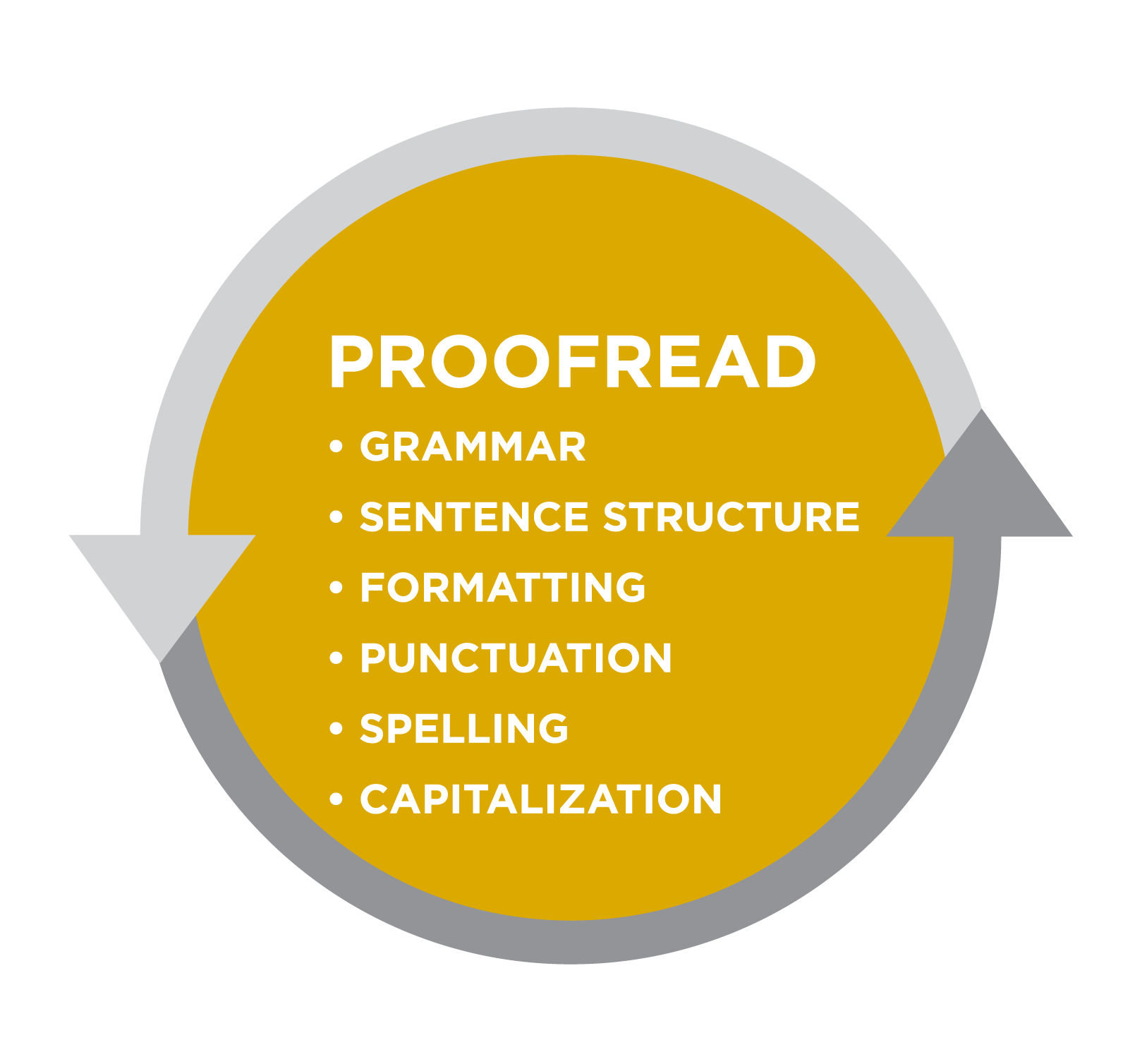Learning Objectives
- Evaluate lower order concerns for revision
- Evaluate strategies for improving sentence clarity
- Evaluate strategies for recognizing potential grammatical issues in a draft
- Evaluate strategies for recognizing potential spelling issues in a draft
- Evaluate strategies for recognizing potential punctuation issues in a draft
Evaluate proofreading activities
Learn these rules, and if you hate them, learn to love them. In college, writing stops being about “how well did you understand fill-in-the-blank” and becomes “how professionally and strongly do you argue your point.” Professionalism, I have found, is the key to the real world, and college is, in part, preparing you for it. If you do not learn how to write in a way that projects professionalism (i.e. these rules), then expect to get, at best, Cs on your papers. — Kaethe Leonard, qtd. in Writing in College
Many students assume—or fear—that college writing is judged primarily on its grammatical correctness. Ideas, evidence, and arguments matter more than the mechanics of grammar and punctuation; however, many of the rules of formal writing exist to promote clarity and precision which writers much achieve in order to effectively convey ideas, evidence, and arguments. In addition, texts that observe the rules of formal written English tend to be more persuasive by making the author appear well informed and careful. Writing replete with errors does not make a great impression, and most educators want to help students present themselves well. Correctness, then, isn’t the most important thing, but it does matter.
Another common assumption among students is that one is either good at grammar or not good at grammar, and that such is one’s immutable fate. Not true. Once you master a particular rule or practice, it becomes second nature, and then you can focus your attention on mastering another. Even people who write formally for a living, like your professors, still look things up in a writing handbook from time to time. You can master the practices of formal written English, and college is a great time to use the feedback from your professors to identify your common errors and learn to correct them.
Quick Inspiration for Proofreading
The following video offers a set of starting guidelines for proofreading. (Note: this video has a jazzy soundtrack but no dialogue, so can be viewed without sound.)

Candela Citations
- Outcome: Proofreading. Provided by: Lumen Learning. License: CC BY-NC-SA: Attribution-NonCommercial-ShareAlike
- Image of Proofread. Authored by: Kim Louie for Lumen Learning. License: CC BY: Attribution
- Correctness in Writing. Authored by: Amy Guptill. Provided by: The College at Brockport, SUNY. Located at: http://textbooks.opensuny.org/writing-in-college-from-competence-to-excellence/. Project: Writing in College: From Competence to Excellence. License: CC BY-NC-SA: Attribution-NonCommercial-ShareAlike
- Proof Reading. Authored by: EdumationFilms. Located at: https://youtu.be/AsGx4-vUpKs. License: All Rights Reserved. License Terms: Standard YouTube License
